Teaching comparing numbers for kindergarten and Pre-K can be a lot of fun! There are a lot of hands-on, concrete activities you can do. And as an added bonus, these activities can even help your students develop their fine motor skills.
Click here to learn more about fine motor skills and math activities!
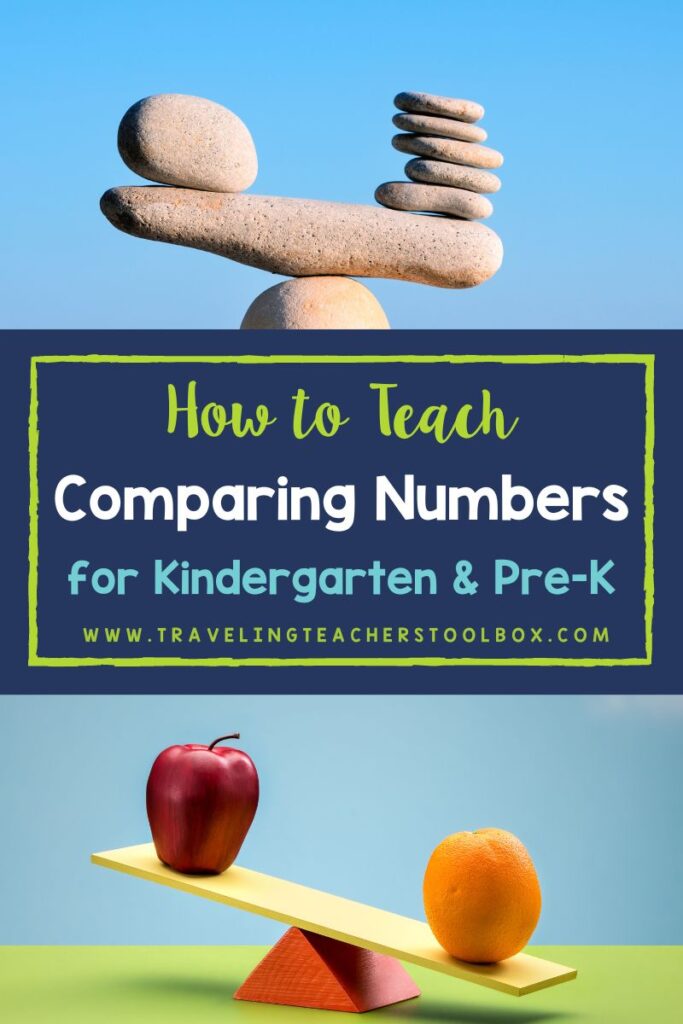
When learning to compare numbers, it is important that students have a basic understanding of counting. They need to know that each number is one quantity more than the number before it. This skill can be developed by counting out physical objects while saying the number aloud.
Using Counting Cubes or Linking Chains
While there are many ways to build numbers, the best way, in my opinion, is to build towers with counting cubes. This is because it becomes very clear to students which tower is taller and therefore which number is bigger.
Write two numbers you want your kids to compare on flash cards or any sort of paper. Have your students build each number. Whichever tower is larger is the bigger number.
Instead of writing numbers out, use playing cards (with numbers) to turn comparing numbers into a game!
Have at least two students draw a number card. Then, they build a tower using the counting cubes. The student who has the bigger (or biggest if more than 2 are playing) tower wins!
These comparing numbers activities can also be done with linking chains. Students link together the correct number of chains for two or more numbers and see which chain is the longest.
Both building towers or using linking chains can also be used to be 3 or more numbers. Then, you can have students arrange them from least to greatest or greatest to least.
Using Balances for Comparing Numbers for Kindergarten and Pre-K
Using balances is a great way to compare number quantities. However, please note it is imperative to only use counters that are the same weight or this will not work correctly.
Also, students should have a basic understanding of how balances work and know that if something is heavier it moves down.
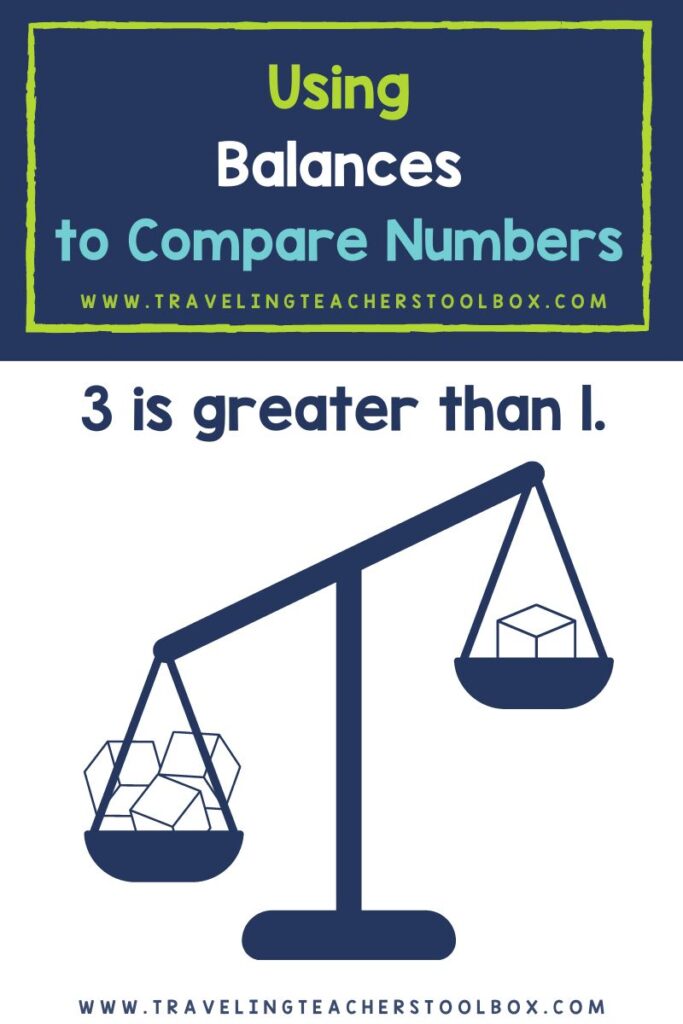
Show students two numbers (using playing cards, number tiles, or however else you want to). Have them put that amount of counters in each part of the scale. The scale will tip to the side that has the biggest number.
Using Ten Frames for Comparing Numbers for Kindergarten and Pre-K
Using ten frames is a great way for students to quickly see which number is bigger or smaller. This is also a great way for students to see how each number relates to the number 10 – important for living in a society that operates in base 10.
Counting Representations of Objects
Counting objects to compare numbers for kindergarten and pre-K students is important, but I recommend it doing it after students have practiced building the numbers.
Show students two different numbers represented as countable objects. They can count the objects to determine which representation of a number has more objects.
Clip cards like these are a great way to do this! Students use clothespins to clip the correct answer when answering the questions using the words more, less, or the same.


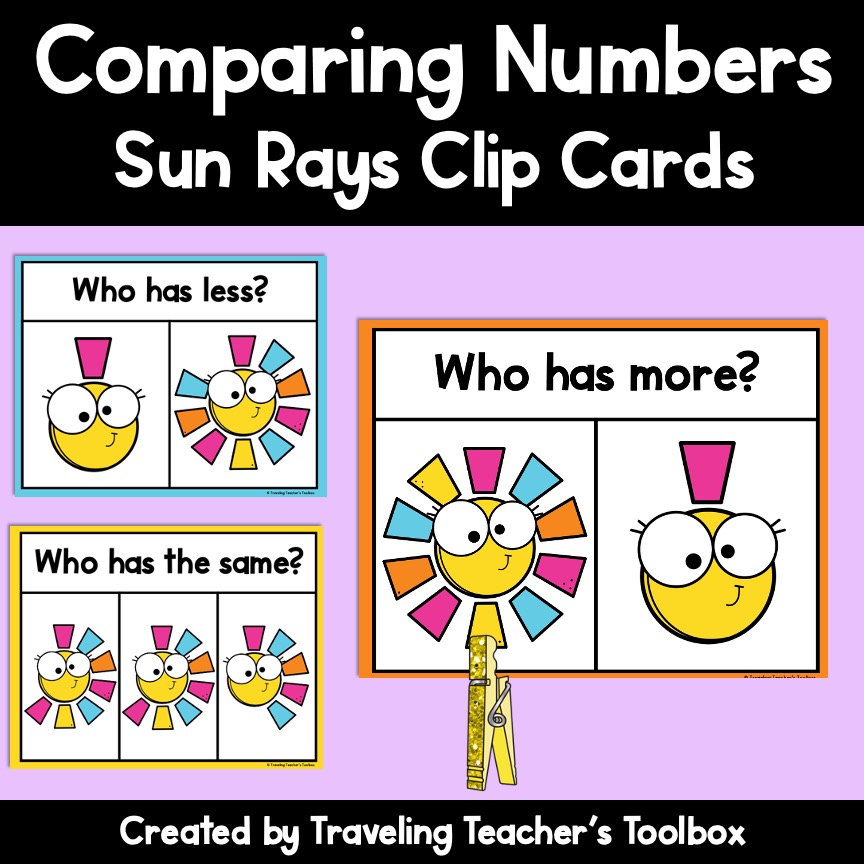
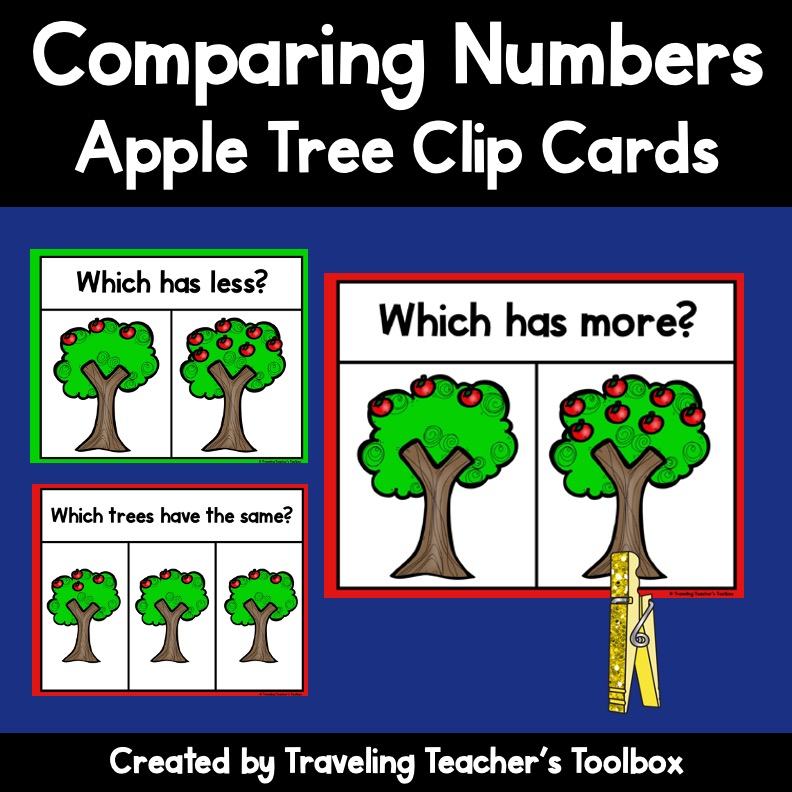
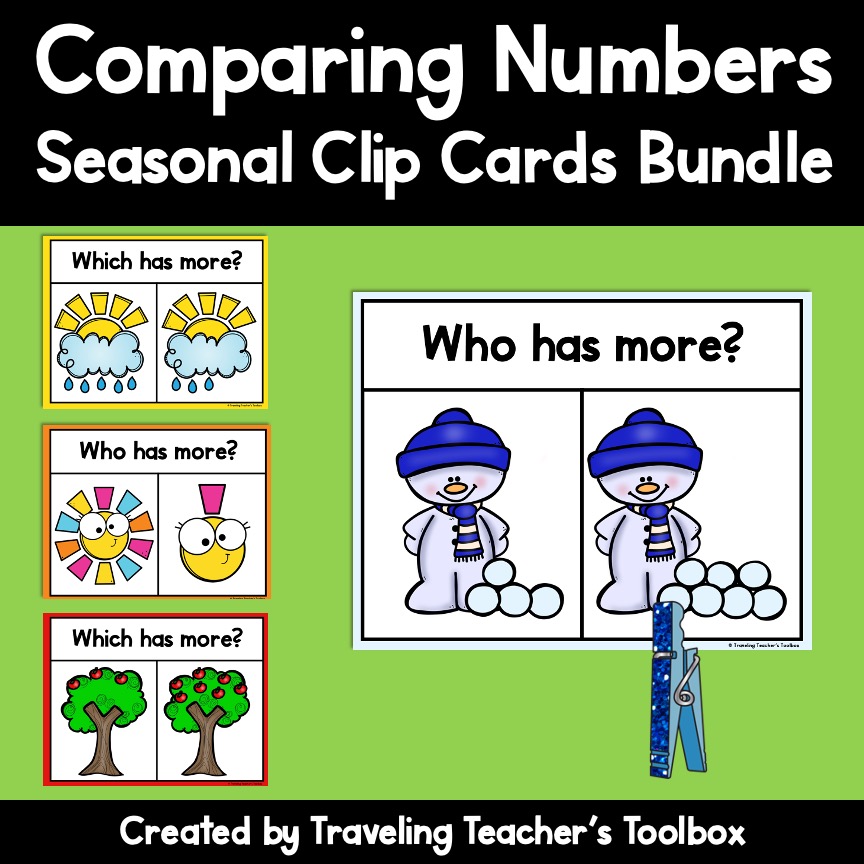
Comparing Numbers for Kindergarten and Preschool
Comparing numbers for Kindergarten and pre-K students is important. It is an everyday skill and will become the base for more challenging math concepts in the future. Luckily, there are fun games and hands-on activities that make learning and comparing numbers fun!
Thanks for stopping by Traveling Teacher’s Toolbox!
